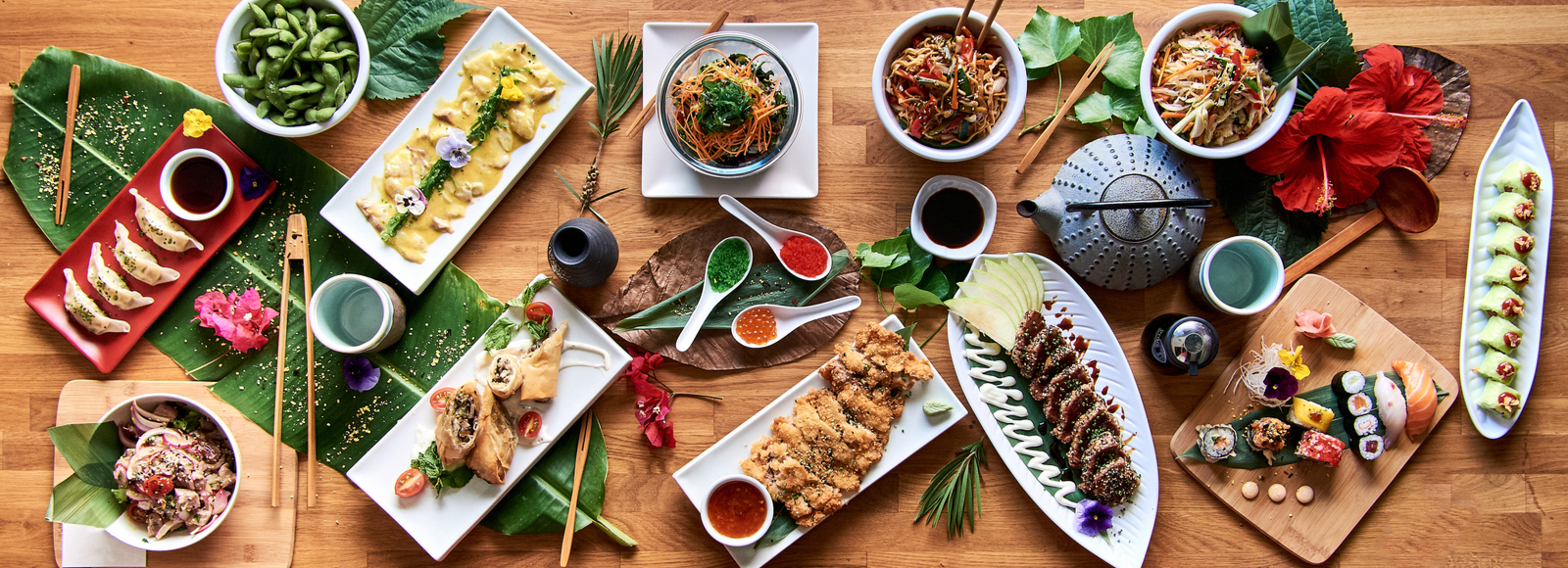Regional Asian Cuisines and their Characteristics

Cuisine is often grouped by region, but the traditional food that is associated with any particular region is usually just a small sampling of the foods that are popular in those areas. For example, Italian food is often thought to consist of mostly pasta, but Southern Italians eat a huge assortment of seafood while Northern Italians often focus on game meats such as rabbit and boar. To dilute a region's cuisine to a small selection of dishes is a disservice to the culture and region as a whole.
The most common source of regional cuisine confusion is the huge, encompassing culinary term, Asian food. Asia is the largest continent in the world, and is made up of hundreds of different regions, countries, and subcultures. Therefore the term Asian food is often considered to be too broad by most culinary experts and is often broken down into the following regions.
- Eastern Asian cuisine: includes Chinese, Japanese and Korean food
- Southeast Asian cuisine: includes Thai, Vietnamese and Malaysian food
- Central Asian cuisine: includes Tibetian, Mongolian and Kazakh food
- South Asian cuisine: encompasses many varieties of Indian, Bangladeshi and Pakastani food
- West Asian cuisine, which is more commonly known as Middle Eastern food.
If you plan on opening an Asian restaurant, you may be considering some variety of Eastern Asian, Southeast Asian or South Asian cuisine. There are quite a few differences between these foods, so you may want to include a broad sampling of more than one region, or stick to a specific region and offer a variety of dishes native to that region. Whatever your choice, understanding regional Asian cuisines and their characteristics is an important first step.
Chinese Food
While Chinese food covers a broad range of cuisines, when discussed in Westernized terms, it will usualy include steamed rice, beef and chicken dishes with sauce and vegetables, as well as different types of soup and noodle dishes. Common Chinese seasonings include soy sauce, oyster sauce, sesame oil, five spice powder, and rice wine. Popular cooking styles include Szechwan, Cantonese and Hunan, just to name a few.
Japanese Food
Sushi and sashami are just two of the most popular food types offered in Japanese cuisine. Each uses a lot of fresh fish and rice, ingredients that are abundant in Japan. Tempura, another favorite, features pieces of meat, fish, and/or vegetables covered in a tempura batter and deep fried until they are crunchy and golden. They can then dipped in sauces such as tsuyu sauce, sweet & sour sauce, or shoyu. Teriyaki is also a popular Japanese cooking style in which foods are broiled or grilled with a glaze of soy sauce, mirin and sugar and then served with sticky rice.
Korean Food
Korean foods are typified by their use of rice, vegetables and seafood, cooked in a wide variety of sauces, sides and spices. Preferred seasonings include red pepper, green onion, soy sauce, bean paste, garlic, ginger, sesame, mustard and vinegars. Some favorites include Kimchi, a fermented and spiced cabbage that is added to many Korean dishes, and Tteokbokki, which are hot and spicy rice cakes. Also popular is the Korean barbecue "pulgoki", which is meat marinated in a sauce made with soy sauce, garlic, sugar, sesame oil, and other seasonings, which is then cooked over a fire in front of the diners table.
Thai Food
Thai food is characterized by fresh ingredients and lots of spices. Pad Thai, one of the most popular Thai dishes, features rice noodles, paired with bean sprouts, peanuts, lime juice, and an assortment of spices such as tumeric and chiles. Thai food usually features fish, chicken, or even pork as the major meat component of the dish and favored seasonings are coconut milk, fish sauce, oyster sauce, kaffir limes and palm sugar.
Indian Food
The most popular flavor component in Indian food is, without a doubt, curry, which is a combination of various spices and herbs that may include ground turmeric, cumin, coriander, ginger, and fresh or dried chilies. This blend is used to spice stews, soups, vegetables, rice and other dishes. Unlike other Asian foods, Indian food is very carb heavy and uses different breads. Diners will find that breads such as Chapati, Puri, Paratha and Naan are often served alongside stews and soups, and dipping the bread in sauces such as chutney, raitas, and achaar, is a popular method of enjoying the food.
Understanding the basic difference among Asian cuisines can help you select the menu for your Asian restaurant. Whether you want to specialize in a particular region or treat your guests to a whirlwind experience of the entire Asian continent, your guests are bound to enjoy any decisions you make.